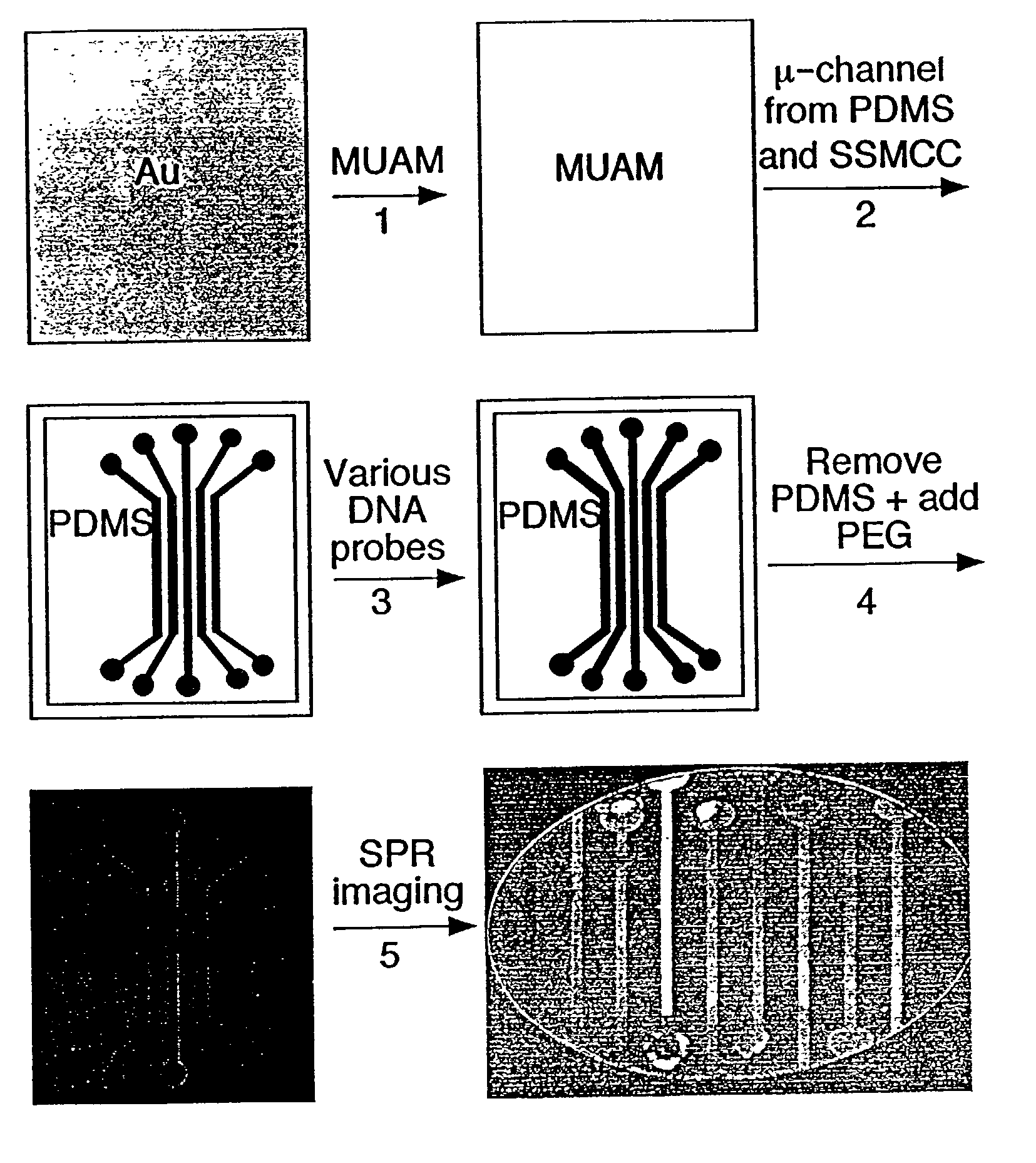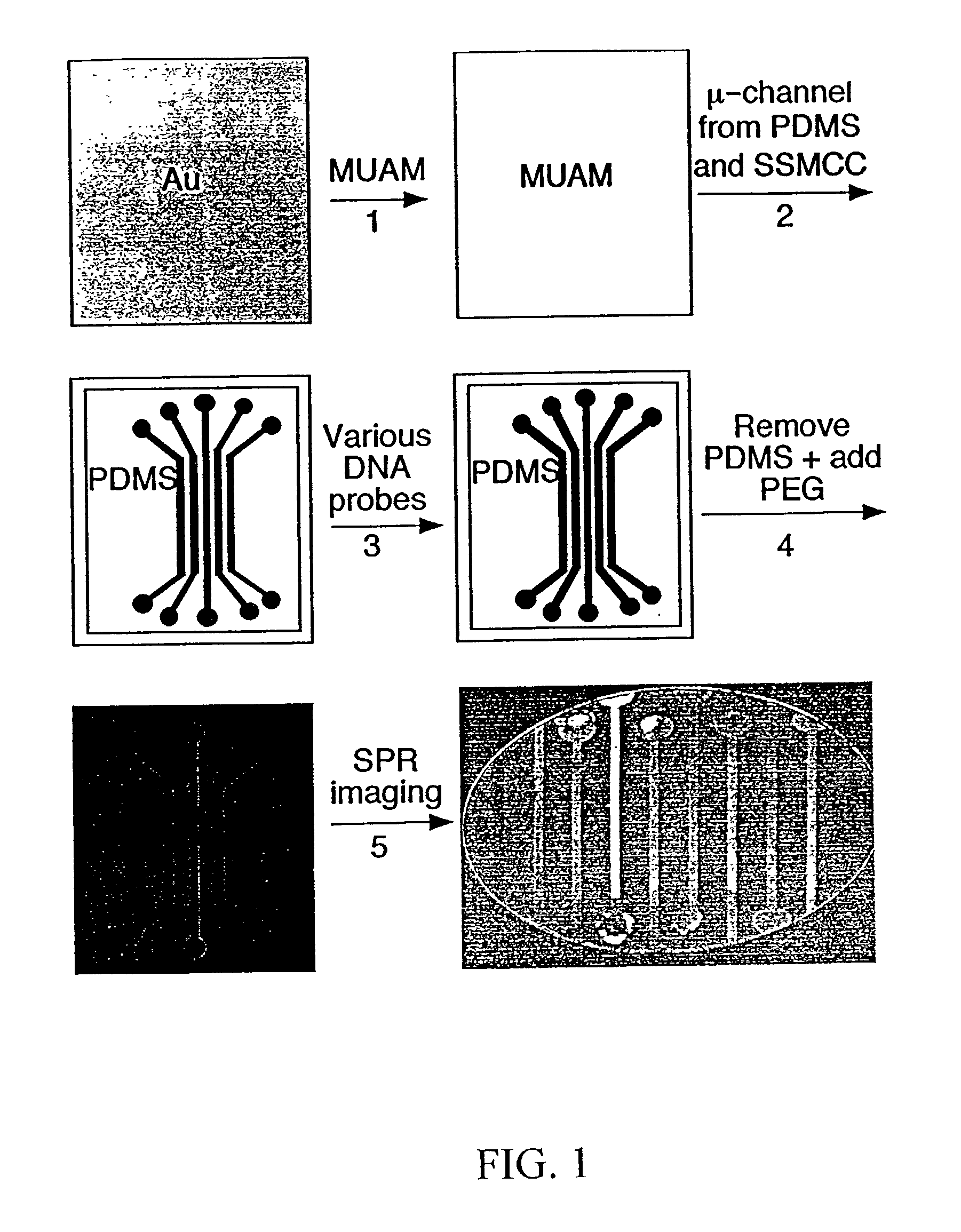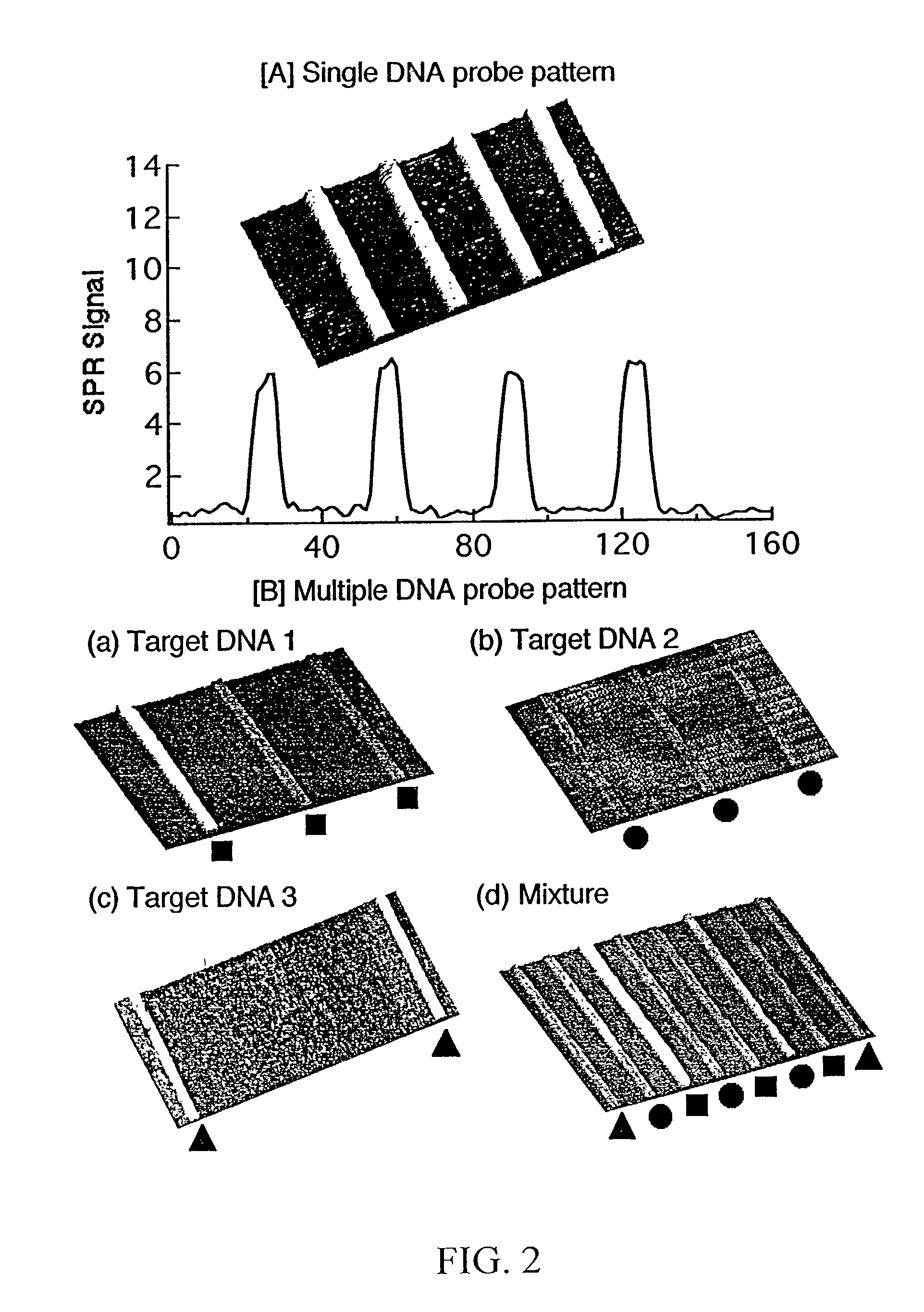Surface plasmon resonance imaging of micro-arrays
a surface plasmon and microarray technology, applied in the direction of material analysis, sequential/parallax process reactions, library screening, etc., can solve the problems of no imaging capability of "biacore" instruments, severely restricting the number of dna sequences that can be screened in a single experiment, and commercially available devices such as "biacore" instruments, which do not offer imaging capabilities
- Summary
- Abstract
- Description
- Claims
- Application Information
AI Technical Summary
Problems solved by technology
Method used
Image
Examples
example 1
Demonstration of 1-Dimensional Array for Detection Nucleic Acids
[0091] Referring now to FIG. 1, which shows the fabrication methodology according to the present invention for creating nucleic acid micro-arrays through the use of micro-fluidic channels in PDMS:
[0092] (1) A gold thin film surface is reacted with an amine-terminated alkanethiol (11-mercaptoundecylamine, MUAM) from a 1 mM ethanolic solution for two hours in order to form a self-assembled monolayer on the gold surface. (2) PDMS micro-channels were fabricated using the previously-described 1:1 photolithography technique of Anderson et al. (2000), and then attached to the MUAM-modified gold surface. A surface pattern is created by flowing a heterobifunctional linker, sulfosuccinimidyl 4-(N-maleimidomethyl)cyclohexane-1-carboxylate(SSMCC), through the PDMS micro-channels over the gold surface. The SSMCC reacts with the MUAM to create a maleimide-terminated alkanethiol monolayer. In order to overcome insufficient flow by cap...
example 2
Fabrication of 2-Dimensional DNA Micro-arrays Using Micro-channels
[0098] Referring now to FIG. 3A, in this example, the use of micro-fluidic channels has been extended to create 2-dimensional arrays based on the 1-dimensional DNA micro-arrays described in example 1. In these experiments, a 1-dimensional array as described in example 1 is first created on the gold surface. Then, a second set of PDMS micro-channels is attached to the surface so as to intersect the previously-deposited 1-dimensional array. This creates a 2-dimensional array of intersections that can be used to detect adsorption onto the surface-bound nucleic acids using either fluorescence microscopy or SPR imaging. Target solutions of complementary DNA or RNA are delivered via the second set of micro-channels so that the target solutions pass over the nucleic acids bound to the surface. The target solutions are allowed to contact the bound nucleic acids for a time sufficient to allow binding of the target to the bound...
example 3
SPR Imaging Using 2-Dimensional Arrays
[0101] Referring now to FIGS. 4A through 4D, these figures are SPR difference images of specific hybridization of complementary DNA onto a 2-dimensional DNA array. Each array element is 300 .mu.m by 300 .mu.m. Specific hybridization and adsorption of each probe was achieved without nonspecific adsorption or other interferences. Of particular note is that these DNA micro-arrays reduce the sample volume required for SPR analysis by an order of magnitude when compared to conventional flow cell system.
[0102] In this example, three different ssDNA probes were affixed to a gold surface in roughly parallel channels, one type of DNA per channel using the exact approach described in example 1. A PDMS micro-channel array having two parallel channels was then affixed on top of, and perpendicular to, the previously-deposited ssDNA probes, so that each channel intersected all three of the previously-deposited ssDNA probes. Complementary ssDNA was then flowed...
PUM
| Property | Measurement | Unit |
|---|---|---|
| Volume | aaaaa | aaaaa |
Abstract
Description
Claims
Application Information
 Login to View More
Login to View More - R&D
- Intellectual Property
- Life Sciences
- Materials
- Tech Scout
- Unparalleled Data Quality
- Higher Quality Content
- 60% Fewer Hallucinations
Browse by: Latest US Patents, China's latest patents, Technical Efficacy Thesaurus, Application Domain, Technology Topic, Popular Technical Reports.
© 2025 PatSnap. All rights reserved.Legal|Privacy policy|Modern Slavery Act Transparency Statement|Sitemap|About US| Contact US: help@patsnap.com



